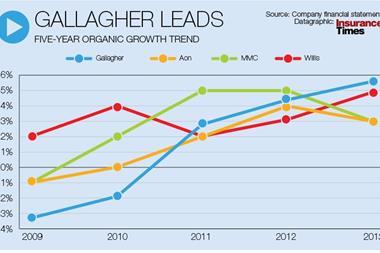Large loss inflation driving reinsurers’ pricing decisions
UK motor excess of loss reinsurance rates for loss-hit business rose by between 10% and 30% at the 1 January 2014 renewals, according to reinsurance broker Willis Re.
This bucked the general trend for softening rates in other countries and business lines renewing at 1 January.
Motor reinsurance rates for UK business with no losses increased by between 0% and 10%, Willis Re said.
The reinsurance broker noted in its 1 January renewals report that large loss claims inflation was driving reinsurers’ pricing decisions. However, Willis Re also said that the propensity to compensate severely injured claimants with periodic payment orders (PPOs) “appears to have stabilised”.
Willis Re said there was a split of UK motor reinsurance capacity between capitalised cover, where reinsurers exit their liabilities under a policy after a certain period by paying the insurer a lump sum, and more traditional non-capitalised cover.
The broker also said the pricing differential between capitalised and non-capitalised reinsurance was becoming clearer.
Bucking the trend
The rising rates in UK motor countered the general trends elsewhere.
In UK property reinsurance, for example, rates fell by between 10% and 15% for non-catastrophe business without losses and were flat for non-catastrophe business that had suffered losses.
Rates for UK property catastrophe business without losses fell by between 10% and 15%.
Willis Re said losses from the St Jude storm that hit the UK in October 2013 produced “low insured losses” and had “little discernible impact on catastrophe programmes”.
Globally, reinsurance rates fell because the supply of capacity outstripped demand, partly because of an increase in capacity from non-traditional sources.
Willis Re said strong 2013 results coupled with $50bn of capacity from non-traditional sources helped fuel the reinsurance market’s over-capacity.
The broker said the situation was made worse because of “muted demand” from reinsurance buyers, driven by improving regulation, which is leading to a better ability to understand, manage and retain risk.
Hosted by comedian and actor Tom Allen, 34 Gold, 23 Silver and 22 Bronze awards were handed out across an amazing 34 categories recognising brilliance and innovation right across the breadth of UK general insurance.









































No comments yet